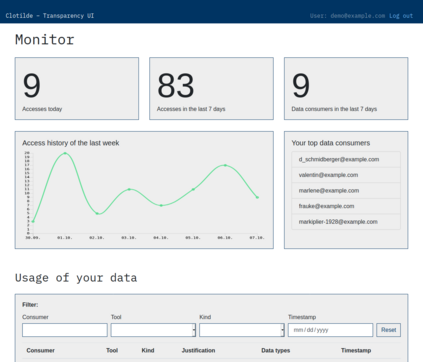Individuals lack oversight over systems that process their data. This can lead to discrimination and hidden biases that are hard to uncover. Recent data protection legislation tries to tackle these issues, but it is inadequate. It does not prevent data misusage while stifling sensible use cases for data. We think the conflict between data protection and increasingly data-based systems should be solved differently. When access to data is given, all usages should be made transparent to the data subjects. This enables their data sovereignty, allowing individuals to benefit from sensible data usage while addressing potentially harmful consequences of data misusage. We contribute to this with a technical concept and an empirical evaluation. First, we conceptualize a transparency framework for software design, incorporating research on user trust and experience. Second, we instantiate and empirically evaluate the framework in a focus group study over three months, centering on the user perspective. Our transparency framework enables developing software that incorporates transparency in its design. The evaluation shows that it satisfies usability and trustworthiness requirements. The provided transparency is experienced as beneficial and participants feel empowered by it. This shows that our framework enables Trustworthy Transparency by Design.
翻译:个人对处理其数据的系统缺乏监督。这可能导致歧视和难以发现的隐蔽偏见。最近的数据保护立法试图解决这些问题,但不够充分。它不能防止数据滥用,同时扼杀数据的合理使用案例。我们认为,数据保护与日益基于数据的系统之间的冲突应当以不同的方式加以解决。当数据访问被提供时,所有用途都应当对数据主体透明化。这使得他们的数据主权能够让个人从明智的数据使用中受益,同时解决数据误用的潜在有害后果。我们通过技术概念和经验评估对此作出贡献。首先,我们构想了一个软件设计的透明度框架,将用户信任和经验的研究纳入其中。第二,我们在重点小组研究中快速和实证地评估框架,为期三个月,以用户的观点为中心。我们的透明度框架能够开发包含数据设计透明度的软件。评估表明,它满足了可使用性和可信度的要求。所提供的透明度是有用的,参与者也感到它赋予了它权力。这说明,我们的框架能够通过设计实现可信赖的透明度。







